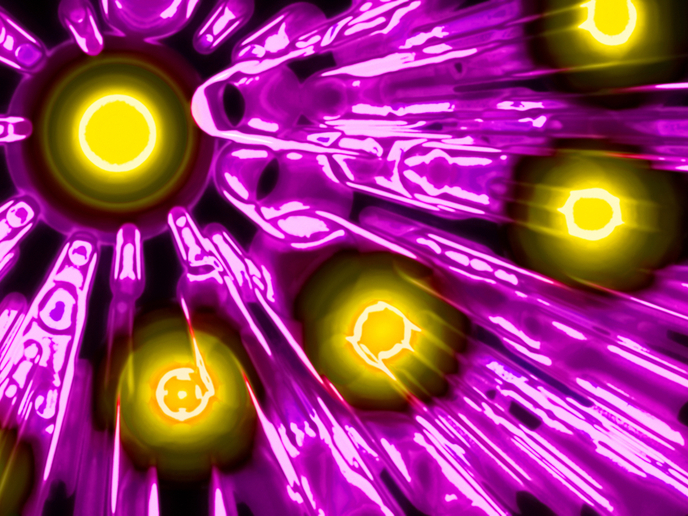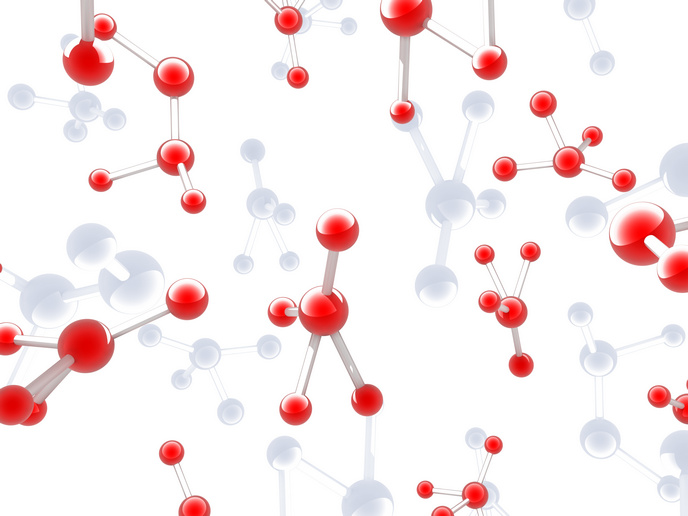Using graphene as a supercharged magnifying glass
Besides their importance in the understanding of fundamental physics, nonlinear optical effects are also key to vital applications such as quantum computing, biomedicine or all-optical switching. But there are still many obstacles to exploiting their full potential, one of these being the actuation of nonlinear optical effects at ultra-low powers and on chip-scale devices. “This is indeed one of the outstanding challenges in optics,” says Prof. Dr Darrick Chang, Group Leader on Theoretical Quantum-Nano Photonics at ICFO. “Realising nonlinear optical effects typically requires large laser intensities, and the resulting power consumption – or the size of the power sources required – often makes it impractical to realise on small scales, such as for portable devices.” The ultimate goal would be to see nonlinear effects at the level of single quantum particles of light, and pursuing this objective is well worth the trouble. It would notably enable the best possible performance and wide deployment of classical nonlinear devices, whilst facilitating disruptive quantum information protocols that cannot be realised on classical platforms. It is with this objective in mind that the GRASP project kicked off in 2014. “The goal of the project was to investigate whether a relatively new and exotic material – graphene – could allow pulses of light to interact with each other at much lower power,” he explains. The graphene path is fundamentally new in nonlinear optics, but Prof. Dr Chang and his team believed that the material’s unique properties would allow even single particles of light to attain the required intensities to actuate nonlinear processes. “One of the unique properties of graphene, which was both theoretically predicted and then experimentally observed, was that it could effectively focus or spatially confine light to extremely small length scales. We could use the analogy of a magnifying glass, which makes it possible to focus light from the sun into a small spot, making the light intense enough to even burn a piece of paper,” Prof. Dr Chang explains. In this analogy, graphene could be viewed as a supercharged magnifying glass. It can squeeze light into a space millions of times smaller than the best magnifying glasses or lenses money could ever buy, and the resulting intensities would be high enough to actuate nonlinear optical processes. The GRASP project was able to observe nonlinear effects originating from this magnifying-glass effect for the first time. This is particularly remarkable, considering that graphene is just a single atom thick, whereas standard nonlinear optical devices involve bulky materials. Whilst the ultimate goal of developing a completely new generation of technology based on nonlinear optical devices that can operate at ultra-low powers is still some distance away, the consortium’s work is a significant step in this direction. “Of course much more work must be done for graphene to become a mature technology for nonlinear optics. But we developed a lot of important building blocks that set the ground for further work. This includes seeing nonlinear optical effects in graphene due to strong light confinement for the first time, learning to fabricate graphene with higher material quality, constructing new devices that can confine fields not millions, but billions of times better than the best lenses, and getting a better understanding of the complex interactions between graphene and light,” Prof. Dr Chang says. Whilst it’s probably too early to speculate on specific routes toward commercialisation, the use of graphene for widely deployable, chip-scale classical and quantum nonlinear optical technologies is now much more conceivable. Which explains why Prof. Dr Chang intends to pursue this work: “Having established the important building blocks needed, our goal is to continue along this exciting line of research, and begin to put these building blocks together, and realise basic but real devices in the coming years.”
Keywords
GRASP, graphene, light, optics, nonlinear optical effects, quantum technology







